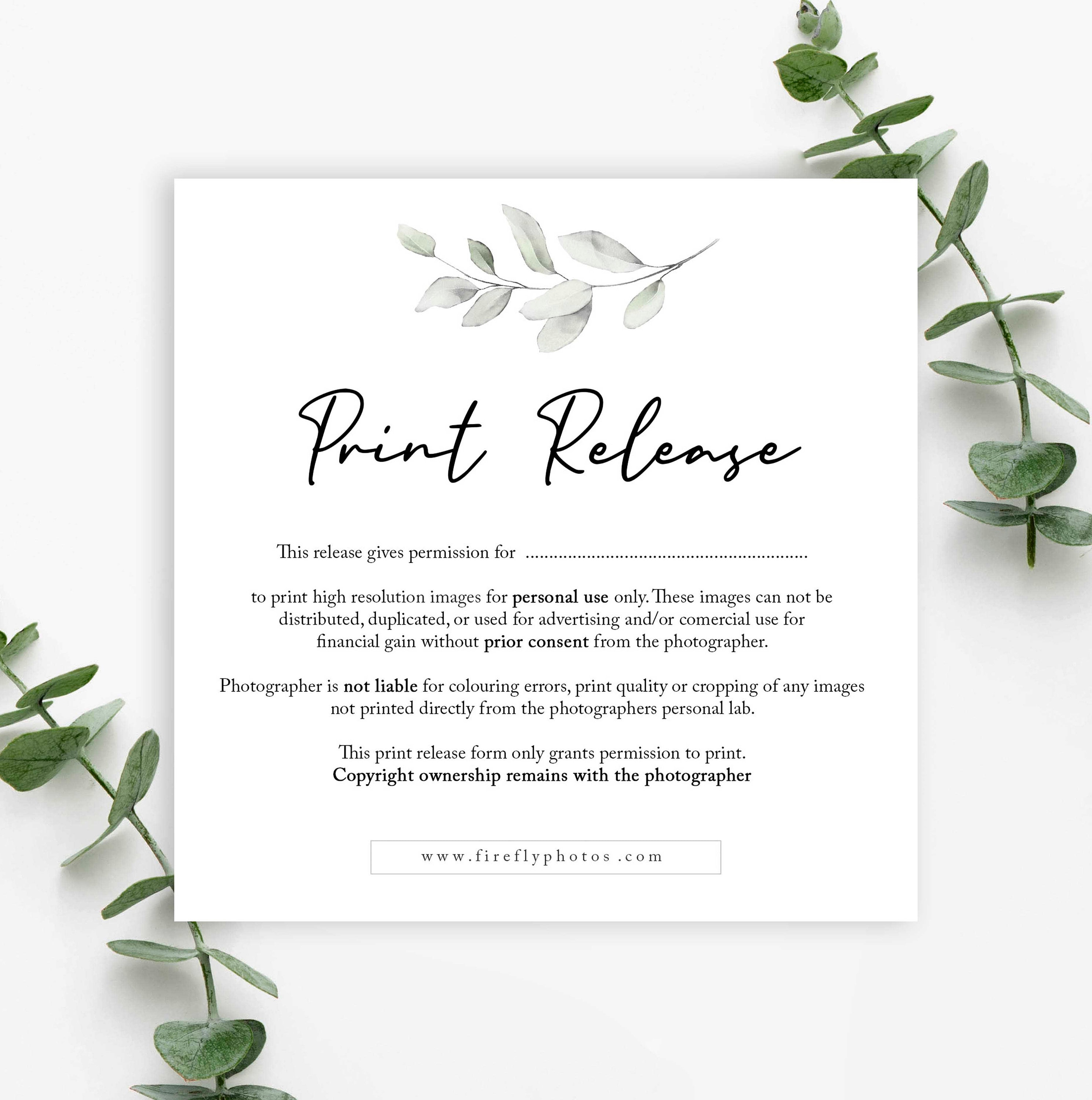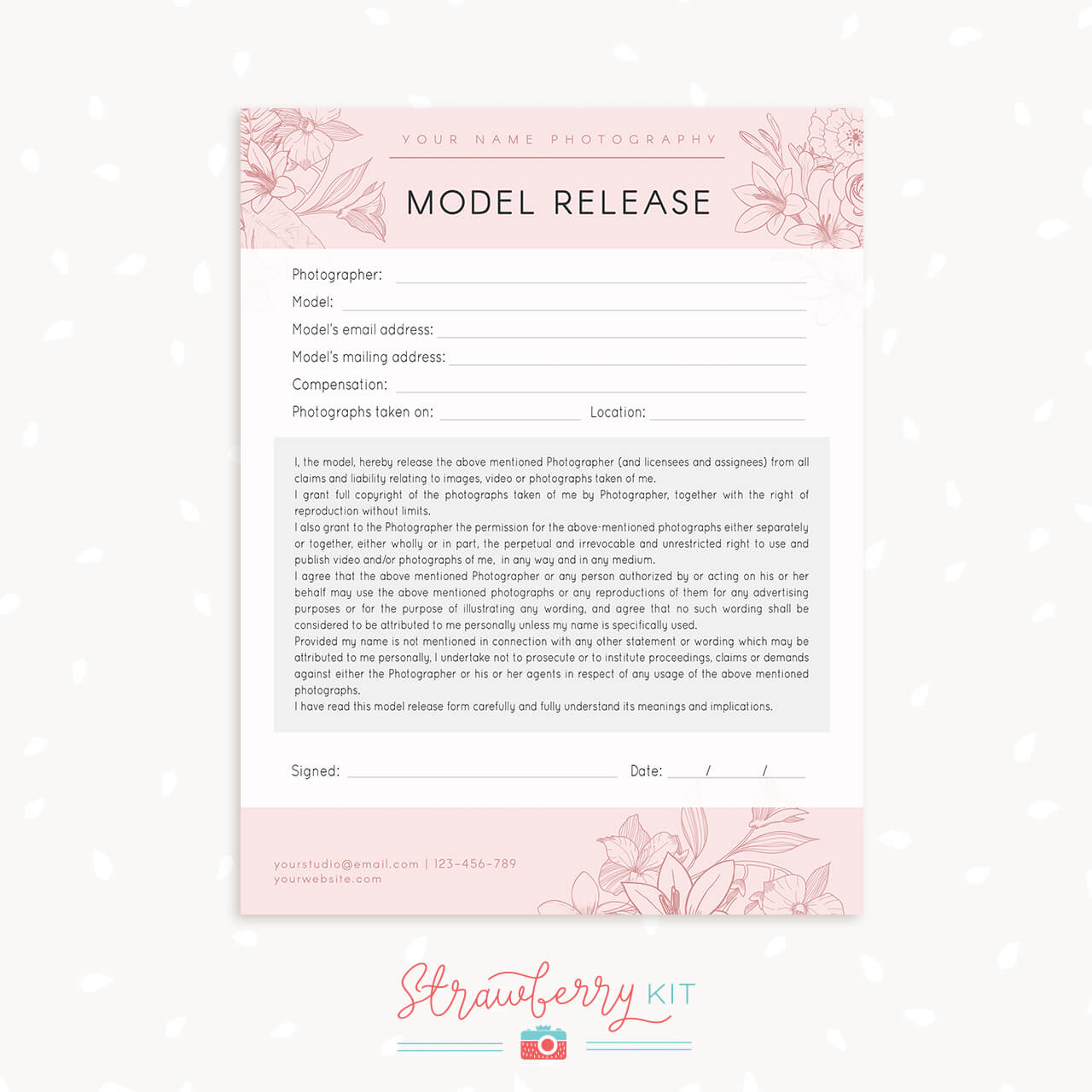
When a photo session is over, you can choose how to manage the shots. This is where print release vs copyright release for photographs comparison comes into play. As soon as the shutter button is pressed, a photo automatically becomes the property of the photographer involved.
Clients are also eligible to create prints and products from digital images if a photographer includes a print release or non-commercial license in the shooting. Don’t worry if this all seems too complicated for you. Read my copyright vs print release comparison guide and you will understand what stands behind a copyright release and how to protect photographs.

Usually, most people need a print release photography, i. e. the ability to download, print, and share images received. Fortunately, it’s what most reasonable photographers include in the price of a photo session in the form of HD files, unlimited download via the links, and a contract or client form so that clients can marvel at photos at any time.
By developing a strategy for how to price photography prints, a photographer can offer a personal use license. It is another related name when buying digital files or finished prints – it permits the reproduction of images. The key term here is personal (non-profit, home) use. If a client wanted to make prints, albums, etc., he/she can do it in a photographer’s studio or similar place. Such products are strictly intended for personal use.
In general, a print release is a limited edition of copyrights. This way, clients can use the materials for personal (intangible) needs while retaining the photographer’s rights. Even if a customer paid for a photo session and received digital copies, this does NOT mean that the ownership of the snapshots lies with him. A photographer is always a copyright holder by default unless he / she has released it.

Clients can access the pictures without restrictions. They can publish unedited photos on social networks, and use digital files in non-commercial print materials. Thus, clients won’t spoil images, editing them, which can degrade the reputation of a studio or ф specific photographer.
The print release guarantees that a photographer is not at a loss for the work done. He / she can use the snapshots for advertising, e.g. in photography marketing templates provided that this suits the customer (it’s specified individually). It’s a guarantee for a photographer that he/she can add pictures to a portfolio without asking for customer’s permission. Print licenses maintain the integrity of the art, encouraging the spirit of creativity, and photography as a whole.
If you still have some questions about print release photography, take a look at the streaming service rules. When users purchase a movie on a platform, they have a digital copy to watch at any time with an unlimited number of friends and on any device, accessed via a link. However, the account holder cannot sell the movie to others, change it, or call themselves a director. The studio can continue to use it as it sees fit.

Many couples don’t understand why an hourly wedding photo session is so expensive, and why photography packages differ by thousands. It’s all about the copyright transferring, which they requested, implying a printed release. Most photographers define in their contract that they don’t include a copyright release in the shooting, and remain copyright holders so that clients cannot edit, sell images, or use them for commercial purposes.
Copyright is a legal concept that guarantees that the creator (author) of an original work (digital file or photograph) has exclusive ownership rights to use and distribute such material. In accordance with the US Copyright Office, a photography copyright owner is a person who pressed the camera’s shutter button, not the person who designed the scenery. As the owner of a picture, a photographer has the right to use it on his/her web platforms as well as to copy, edit, and distribute by selling or transferring.
Now, no one who wants to access original images to modify, sell or reuse is allowed to do so. Clients are forbidden to change shots with filters when sharing on social networks, or remove a photographer’s name or watermark. They must first obtain a copyright release, which is the industry standard for retaining image rights. The absence of copyright doesn’t prevent a customer from using shots for non-commercial purposes; it’s just that a photographer can add these pictures to the portfolio.

Copyright infringement by image editing, printing, distributing outside the family, etc. without the photographer’s permission is theft. This includes things like removing a photography watermark or submitting photos to contests or posts. There are huge penalties for copyright infringement under the Federal Digital Millennium Copyright Act.
Photographer works hard to create eye-catching pictures for clients, including pre-production, post-processing, and equipment expenses as well. Thus, they don’t want to relinquish the rights to them. After all, they couldn’t use the materials without written permission, which complicates creating a photography brand. Therefore, the level of respect for the photography industry is important here. Finally, you would never demand from a musician all the rights to his / her song and refuse to perform, once ordering it in the author’s performance.
Therefore, a copyright release (permission) is a legal paper designed to transfer ownership of a photo from a photographer to a client. After transferring, a photographer no longer owns the copyright and he / she can’t use the picture and its derivatives. Obtaining copyright release photography form from a professional is very expensive in most cases and not quite what an average couple needs.

Copyright vs print release – famed people choose the former in this battle. They want to be able to sell images to magazines or don’t want a photographer to build their brand on their photos. A high-profile couple wants to make sure a popular magazine gets an exclusive first engagement review. To prevent a photographer from leaking their photo first to tabloids, they buy copyrights for pictures.
In these cases, customers expect a price that is much higher than the cost of a print release. Therefore, if you’re asking for copyrights on your shots, be ready to pay more than you’d like to spend. Ask a photographer for a full rights license or a print release instead – it’s all most people typically need.

A print release is about transferring the rights to reproduce files from the original for non-commercial purposes, and a copyright release completely frees the materials from the photographer’s claims to authorship. However, what if a couple doesn’t plan to print images but wants their photo not to be placed in the portfolio because of a guest whose privacy must be kept? There are several options at a lower cost that may suit.
This type is specified in a contract that gives a photographer permission to share the client’s images by signing an online fair use right. It doesn’t entail additional expenses and is often a standard clause in a contract. It is easier and cheaper for clients to host modified releases than to obtain copyright. If you are concerned about your and guests’ privacy, just fill out a model release form allowing a shooter to share images or close-ups/back of the head only.
This license is perfect when a client needs access to the photos for defined limited use. For example, this release may mean that a client can use a low-res picture on his/her site or social network without any additional permissions.
These licenses are suitable for commercial photographers, where a product photography contract is an integral part. Commercial shots include portraits, images of real estate, and product images. An enterprise can purchase a commercial use license to take advantage of the pictures created in the shared session for advertising.
Usually, photographers offer such licenses only when trading services. However, a wedding photographer may offer this to clients as well. The full license implies that a client can edit, print, and modify images. Wherein, the copyright for the picture still belongs to a photographer.
Now you know the difference between a print release and a copyright release and can improve your photos without violating the law. You wanted a bright image, but your relatives insisted on a classic one? Is there a stranger in your photos? Does the background look off-kilter? No worry.
It is always important to ask a photographer about the number, size, and resolution of the prints and whether they are included in the price. This way you know in advance the full price for a complete photography package. Some photographers place restrictions like temporary access to a link, low-res for sharing, or print size in an included print release, so you need to find out the details.
It all depends on the photographer’s decency. Those professionals who work for a name, not for profit, include most of the print materials in the photoshoot. They neither reduce quality nor hide pictures until they receive payment. At best, everything is already included in a photo session; at worst, you won’t get your shots until you buy them.
The best way to protect photos online is to use a watermark plugin before giving clients access to photos. The last thing you want is a person, who turns their marketing portfolio into a personal gallery. Watermarking helps prevent this, and a beautiful logo can embellish pictures. Besides, if you are going to share your assets with others and need to provide 100% proof of authorship, you can use ScoreDetect. The plugin will scan the materials and generate an authorship report.